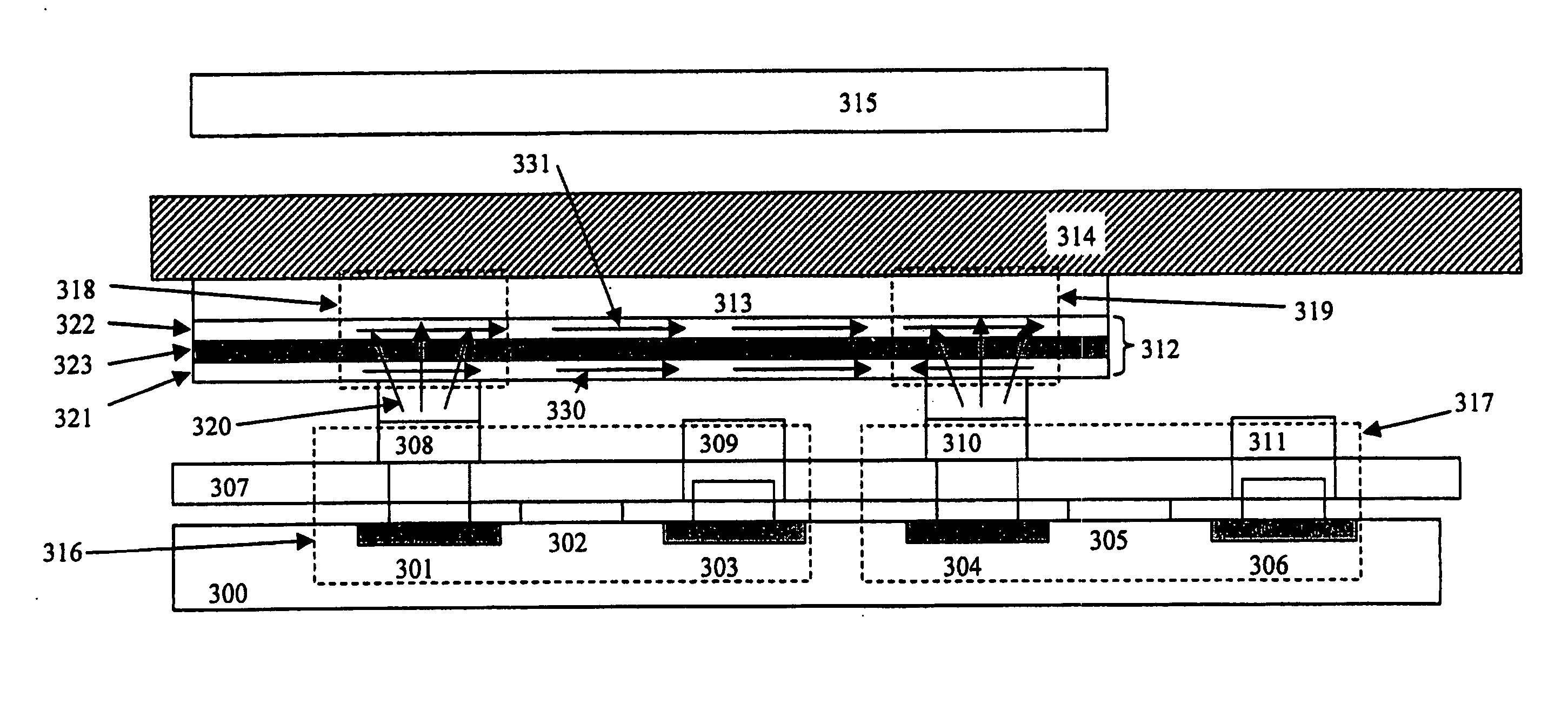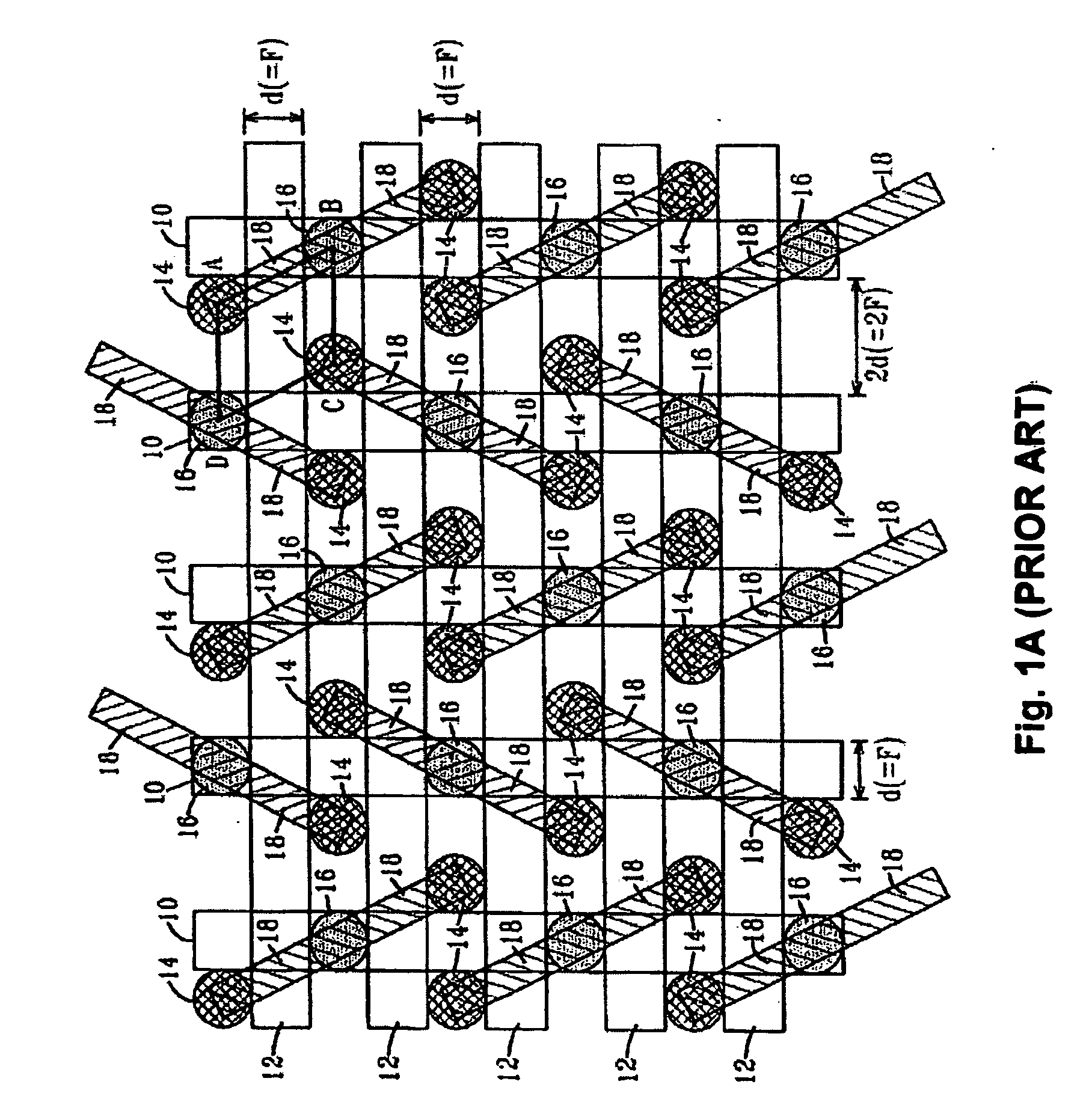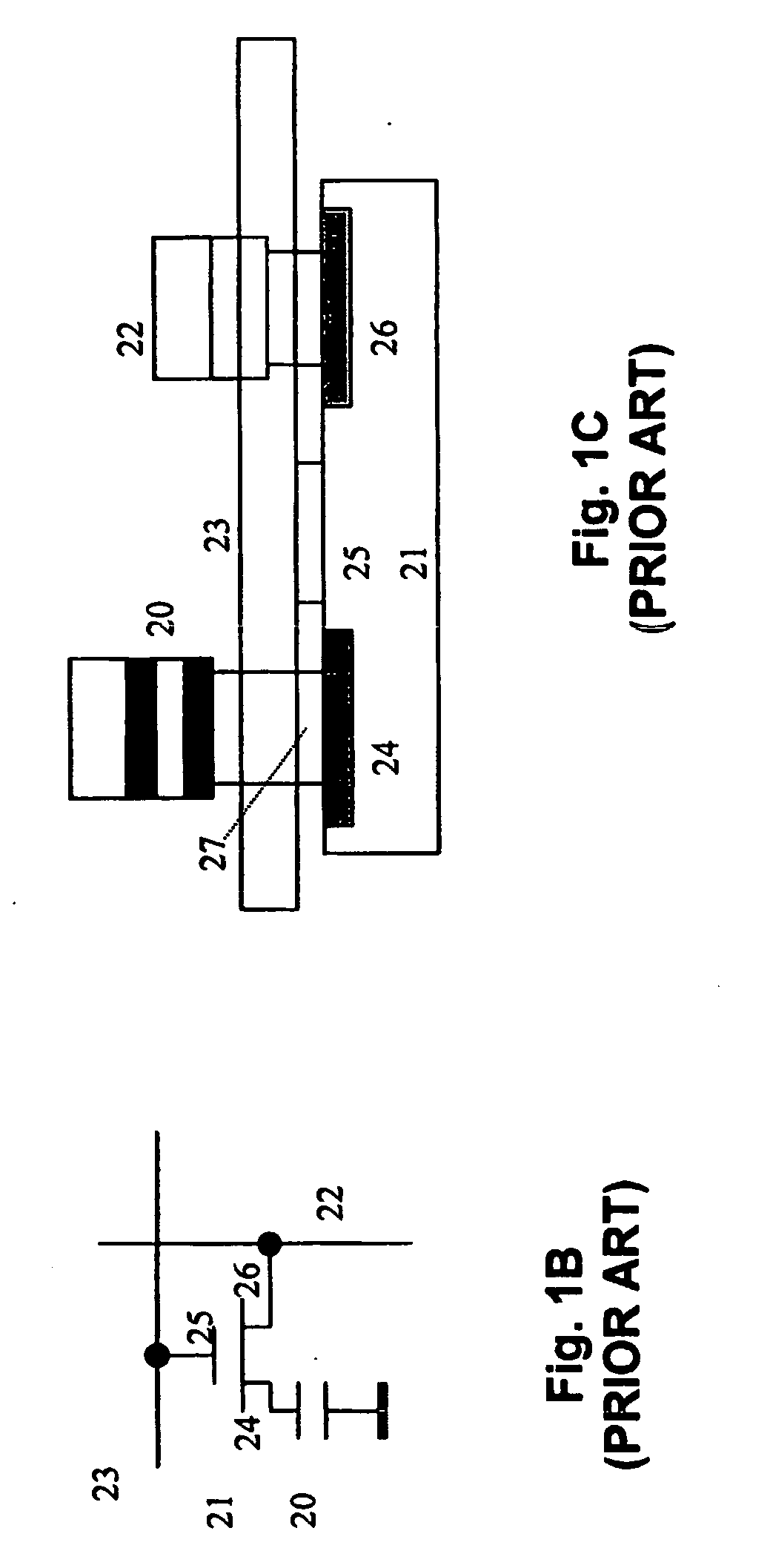Nano-contacted magnetic memory device
a magnetic memory and non-contact technology, applied in the field of magnetic memory devices, can solve the problems of non-uniform cell resistance generation errors, key problems of fatigue properties, and non-uniform cell resistance, and achieve the effect of low cost and high density
- Summary
- Abstract
- Description
- Claims
- Application Information
AI Technical Summary
Benefits of technology
Problems solved by technology
Method used
Image
Examples
Embodiment Construction
[0028] It is pointed out that in the present application the term “critical temperature” is substantially the blocking temperature for antiferromagnetic (AFM) material, which can be less than the Néel temperature. The critical temperature is substantially the Curie temperature for ferromagnetic material. The blocking temperature of an AFM layer is the temperature at or above which the AFM layer loses its ability to “pin” (i.e. fix) the magnetization of an adjacent ferromagnetic layer below the Curie temperature of the adjacent ferromagnetic layer.
[0029]FIG. 1A shows a top view of a layout of a 6F2 DRAM cell structure according to the prior art. The DRAM cell structure includes vertical bit lines 10, horizontal word lines 12, capacitor contacts 14, bit line contacts 16, and active (diffusion) areas 18 that include each a source region and a drain region. The word lines 12 electrically contact with gate electrodes (not shown) and the bit lines 10 electrically contact with the source ...
PUM
 Login to View More
Login to View More Abstract
Description
Claims
Application Information
 Login to View More
Login to View More - R&D
- Intellectual Property
- Life Sciences
- Materials
- Tech Scout
- Unparalleled Data Quality
- Higher Quality Content
- 60% Fewer Hallucinations
Browse by: Latest US Patents, China's latest patents, Technical Efficacy Thesaurus, Application Domain, Technology Topic, Popular Technical Reports.
© 2025 PatSnap. All rights reserved.Legal|Privacy policy|Modern Slavery Act Transparency Statement|Sitemap|About US| Contact US: help@patsnap.com



